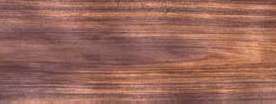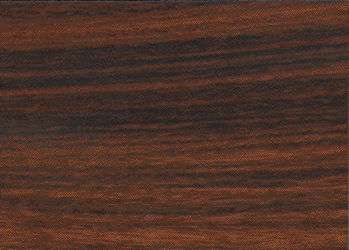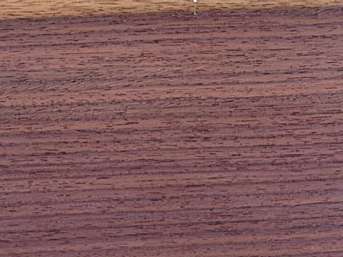    
Indian rosewood (Dalbergia latifolia)
Family: Leguminosae
Common names: Bhotbeula, Bhotuk, Biti, Bodbera, Bombay blackwood, Bombay rosewood, Botbiola, East Indian rosewood, Eetti, Eravadi, Eruvadi, Indian palisandre, Indian palissander, Indian rosewood, Iridi, Iti, Java palisandre, Jitangi, Jitegi, Jitiyegishi, Kala-rukh, Kalaruk, Karitti, Makle, Malabar, Rute, Ruzerap, Saisa, Satsayar, Satsiyar, Seris, Serisso, Shisham, Siase, Siras, Siris, Sirsa, Sirsai, Sisali, Sison, Sissa, Sissu, Sissua, Sissui, Sisu, Sitsal, Sonobrits, Sonokeling, Thethagatti, Thodagatti, Thothagatti, Veeti, Vitti, Yerugudu
Distributed in: India, Indonesia, Malaysia, Nepal, Philippines, Sri Lanka, Vietnam (Oceania and S.E. Asia)
Distribution overview: The natural range of Dalbergia latifolia stretches from the sub-Himalayan tract to the southern tip of India and the island of lava in Indonesia. Its best growth occurs in the Western Ghat forests of Karnataka, Kerala, and Tamil Nadu. It has been introduced to Burma, Sri Lanka, Nepal, Nigeria, and Kenya.
Common uses: Agricultural implements, Artificial limbs, Bearings & bushings, Bedroom suites, Boat building (general), Boat building: framing, Bobbins, Boxes and crates, Brush backs & handles, Cabinetmaking, Carvings, Chairs, Chests, Concealed parts (Furniture), Core Stock, Decorative veneer, Desks, Dining-room furniture, Door, Dowell pins, Dowells, Drawer sides, Drum sticks, Excelsior, Figured veneer, Fine furniture, Floor lamps, Flooring, Food containers, Fuelwood, Furniture , Furniture components, Furniture squares or stock, Furniture, Handles: woodworking tools, Hatracks, Heavy construction, Joinery, Kitchen cabinets, Light construction, Living-room suites, Matches, Mathematical instruments, Mine timbers, Musical instruments , Musical instruments, Musical instruments: piano, Musical instruments: strings, Office furniture, Organ pipes, Paneling, Piano keys, Pianos , Picker sticks, Plain veneer, Plywood, Plywood: veneer (marine), Poles, Pulp/Paper products, Radio - stereo - TV cabinets, Railroad ties, Rustic furniture, Shade rollers, Shuttles, Sounding boards, Specialty items, Spindles, Sporting Goods, Structural work, Tables, Textile equipment, Tool handles, Toys, Turnery, Vehicle parts, Veneer, Veneer: decorative, Walking sticks, Wheel spokes, Wheels
Product sources: Quantities of Rosewood available on the market are rather limited because of increasing demand for rosewood. The material is shipped in the form of 10 to 36 inches (25 to 90 cm) diameter logs, most of which is converted into veneer. Rosewood is unsuitable for plywood manufacture.
Environment profile: Status has not been officially assessed
Tree size: Trunk diameter is 150-200 cm
Colors: the heart isReddish brown, Yellow to golden-yellow to orangeand the sapwoodWhite to yellow, Yellow.The grain isStriped figure, the textureUniformand the lusterMedium
Natural durability: Susceptible to attack from powder post (Lyctid & Bostrychid) beetles, Very durable
Odor: No distinctive odor or taste after seasoned
Kiln Schedules: UK=J US=T10D5S/T8D4S Fr=4
Kiln Drying Rate: Very slow (>28 days for boards < 32 mm, to >84 days for boards >= 63 mm)
Drying Defects: Slight end splitting, Slight surface checking
Ease of Drying: Reconditioning Treatement
Tree Identification: Bole/stem form is straight
Comments: General finishing qualities are rated as good Generally strong, tough, and hard. It is one of two most popular woods for carving and engraving, the other species being Sissoo (D. sissoo ). In the seasoned condition, Indian rosewood is two-and-one-half-times as hard as Oak (Quercus ), about twenty-five percent stronger in bending and compression along the grain, and fifteen percent stiffer.
Blunting Effect: Little
Boring: May Blunt cutting edges and interfere with boring operations
Carving: Fairly Difficult to Very Difficult
Cutting Resistance: Moderate to saw
Gluing: Fair to Good Results
Mortising: Fairly Difficult to Very Difficult
Moulding: Good finishing
Movement in Service: Good finishing
Nailing: Holds nails well, Very Good to Excellent
Planing: Planes well, to a good finish
Resistance to Impregnation: Sapwood is permeable
Response to hand tools: Responds Readily
Routing recessing: Fairly Difficult to Very Difficult
Sanding: Easy to sand
Veneering qualities: Suitable for slicing, Suitable for slicing
Steam bending: Tends to Degrade
Screwing: Screwing yields good results, Very Good to Excellent Results; Turning: Good results
Polishing: Surface Preparation; Staining: Surface Preparation;
- Numerical data Metric
- Numerical data English
- Strength properties
- References
 |
 |
 |
 |
| Item |
Green |
Dry |
Metric |
| Specific Gravity |
0,64 |
0,77 |
|
| Density |
|
849 |
kg/m3 |
| Bending Strength |
709 |
1159 |
kg/cm2 |
| Crushing Strength |
110 |
124 |
kg/cm2 |
| Hardness |
|
885 |
kg |
| Impact Strength |
111 |
106 |
cm |
| Shearing Strength |
|
132 |
kg/cm2 |
| Stiffness |
89 |
115 |
1000 kg/cm2 |
| Tangential Shrinkage |
5 |
|
% |
| Radial Shrinkage |
2 |
|
% |
| Weight |
865 |
833 |
kg/m3 |
| Maximum Load |
0,7 |
0,84 |
cm-kg/cm3 |
| Toughness |
|
|
cm-kg |
| Static Bending |
463 |
508 |
kg/cm2 |
|
 |  |  |  | | Item | Green | Dry | English | | Bending Strength | 10096 | 16486 | psi | | Crushing Strength | 1578 | 1774 | psi | | Density | | 53 | lbs/ft3 | | Hardness | | 1953 | lbs | | Impact Strength | 44 | 42 | inches | | Maximum Crushing Strength | 5422 | 7783 | psi | | Shearing Strength | | 1884 | psi | | Static Bending | 6586 | 7232 | psi | | Stiffness | 1272 | 1644 | 1000 psi | | Work to Maximum Load | 10 | 12 | inch-lbs/in3 | | Specific Gravity | 0.64 | 0.77 | | | Weight | 54 | 52 | lbs/ft3 | | Radial Shrinkage | 2 | | % | | Tangential Shrinkage | 5 | | % | | Volumetric Shrinkage | 8 | | % | |
Bending strength (MOR) = medium 0
Modulus of Elasticity (stiffness) = low 1
Max. crushing strength = high 1
Shrinkage, Radial = very small
Density (dry weight) = 53-60 lbs/cu.ft.
Shrinkage, Tangential = small
Max. crushing strength = medium
Shearing strength (parallel to grain) = medium
Density (dry weight) = 46-52 lbs/cu. ft.
Toughness-Hammer drop (Impact Strength) = medium
Modulus of Elasticity (stiffness) = very low
Hardness (side grain) = medium
Shrinkage, Volumetric = small
Work to Maximum Load = very low
Shearing strength (parallel to grain) = low
Modulus of Elasticity (stiffness) = medium
Hardness (side grain) = very hard
Hardness (side grain) = hard
Bending strength (MOR) = high
Shrinkage, Volumetric = very small
Shrinkage, Tangential = very small
Shearing strength (parallel to grain) = very low
Benskin, E.,1915,Note on Blackwood (Dalbergia latifolia Roxb.,Indian Forest Bulletin No.27Bodig, J. and B. A. Jayne. 1982. Mechanics of Wood and Wood Composites. Van Nostrand Reinhold Company, New York.Bolza, E.,1976,Timber and Health,Div. Building Res. C.S.I.R.O. AustraliaBourdillon, T.F.,1908,The Forest Trees of Travancore,Travancore Government PressBrown, W.H.,1969,Properties and uses of Tropical hardwoods in the United Kingdom. Part 1,Nonstructural properties and uses.,Conference on Tropical hardwoods SC-5/TN-5, Syracuse UniversityBrown, W.H.,1978,Timbers of the World, No. 3 Southern Asia,TRADA, Red Booklet SeriesChudnoff, M.,1984,Tropical Timbers of the World,U.S.A. Department of Agriculture, Forest Service, Forest Products,Laboratory, Madison.Cox, H.A.,1939,A Handbook of Empire Timbers,Forest Products Research Laboratory, Princes RisboroughFarmer, R.H.,1972,Handbook of Hardwoods,HMSOForest Products Research Laboratory, U.K.,1969,The Movement of Timbers,Forest Products Research Laboratory, Princes Risborough Technical Note,No.38Forests Products Research Laboratory, U.K.,1956,A Handbook of Hardwoods,Forest Products Research Laboratory, Princes Risborough, Department of,Science and Industrial Research, Building Research EstablishmentGamble, J.S.,1902,A Manual of Indian Timbers,Sampson Low, Marston & Co. LondonHarrar, E.S.,1942,Some Physical Properties of Modern Cabinet Woods 3. Directional and Volume,Shrinkage,Tropical Woods,9(71, pp26-32HMSO.1972.Handbook of Hardwoods, 2nd Edition.Revised by R.H. Farmer.Department of the Environment, Building Research Establishment, Princes Risborough Laboratory, Her Majesty's Stationery Office, London.Howard, A.L.,1948,A Manual of Timbers of the World.,Macmillan & Co. Ltd. London 3rd ed.I. Soerianegara and R.H.M.J. Lemmens (Editors,1993,Plant Resources of South-East Asia 5,(PROSEA, 1,Timber trees: Major commercial timbers,Pudoc Scientific Publishers, Wageningen 1993Jackson, A. and D. Day.1991.Good Wood Handbook - The Woodworker's Guide to Identifying, Selecting and Using the Right Wood.Betterway Publications, Cincinnati, Ohio.Kartasujana, I., Martawijaya, A.,1973,Commercial Woods of Indonesia,Forest Products Research Institute, Department Pertanian, Bogor Indonesia,Report No.3Keay, R.W.J.1989. Trees of Nigeria.Revised Version of Nigerian Trees. Clarendon Press, Oxford.Kline, M. 1978. Dalbergia latifolia - East Indian rosewood. In A Guide to the Useful Woods of the World. Flynn Jr., J.H. Editor. King Philip Publishing Co., Portland, Maine. Page 128-129.Kloot, N. H. and E. Bolza.1961.Properties of Timbers Imported into Australia.Technological Paper No. 12.Division of Forest Products, Commonwealth Scientific & Industrial Research Organization, Melbourne, Australia.Kukachka, B.F.,1970,Properties of Imported Tropical Woods,Forest Research Paper FPL 125Limaye. V.D.,1939,The Comparative Strengths of Some Important Indian Timbers and Their Uses.,Indian Forest Records. Utilisation. Vol.1-ALimaye, V.D.1954. Grouping of Indian Timbers and their Properties, Uses and Suitability. Indian Forest Records, New Series. Timber Mechanics, Vol. 1, No. 2, Forest Research Institute, Dehra Dun, India.Limaye, V.D. and B.R. Sen. 1953. Weights and Specific Gravities of Indian Woods. Indian Forest Records, New Series. Timber Mechanics, Vol. 1, No. 4, Forest Research Institute, Dehra Dun, India.Lincoln, W.A.1986.World Woods in Color.Linden Publishing Co. Inc.,Fresno, California.Martawijaya, A., Kadir, K., Kartasujana, I.,1986,Indonesian Wood Atlas. Vol.1.,Department of Forestry Agency for Forestry Research and Development.,Bogar-IndonesiaNazma,1981,A handbook of Kerala Timbers,Kerala Forest Research Institute Research Report, No.9Patterson, D.,1988,Commercial Timbers of the World, 5th Edition,Gower Technical PressPearson, R.S., Brown, H.P.,1932,Commercial Timbers of India,Govt. Printer Calcutta,2 volsPearson, R.S.,1918,Preliminary note on the seasoning of some Indian timbers by natural,methods,Indian Forest Rec. 7(1) pp1-74Prasad, B.N., Jain, J.C.,1964,Observations on the durability of South Indian timbers in treated and,untreated condition,Indian Forester 90(1) pp32-9Prasad, B.N., Jain, N.C.,1964,Preliminary studies of cutting resistance of a few Indian woods,Indian Forester 90(10) pp698-701Ramesh, Rao K., Juneja, K.B.S.,1971,Field Identification of Fifty Important timbers of India,Dehra Dun IndiaRamesh, Rao K., Purkayastha, S.K.,1972,Indian Woods - Their Identification Properties and Uses,Dehra Dun India,Vol. 3Rao, K.R. and S.K. Purkayastha. 1972. Indian Woods - Their Identification, Properties and Uses, Volume III - Leguminosae to Combretaceae. Published by the Manager of Publications, Delhi, India.Rehman, M.A., Et al,1956,The steam bending properties of Indian timbers,Indian Forest Record (N.S.) Wood Seasoning 1(1)Rehman, M.A.,1956,The Seasoning behaviour of Indian Trees,Indian Forest Bulletin (N.S.) Wood Seasoning No. 198Rendle, B.J.,1969,World Timbers (3 Vols.,Ernest Benn Ltd. LondonSekhar, A.C. and S.S. Bhatnagar.1957.Physical and Mechanical Properties of Woods Tested at Forest Research Institute, Report V.Indian Forest Records, New Series, Timber Mechanics, Volume 1, Number 6. The Manager of Publications, Delhi.Sekhar, A.C., Bhatnagar, S.S.,1957,Physical and mechanical properties of woods tested at Forest Research,Institute Report V,Indian Forest Records (n.s) Timber Mechanics 1(6) pp123-35Sekhar, A.C.,1967,Some Indian Timbers Equivalent to Foreign Timbers,Van Vigyan 5(1&2,pp18-24Tewari, M.C., Jain, J.C.,1980,Utilization of Secondary Species,Journal of the National Building Organization 25(2) pp1-6Timber Development Association Ltd.,1955,World Timbers (3 Vols.,Timber Development Association Ltd.Titmuss, F.H.,1965,Commercial Timbers of the World,Technical Press Ltd., London, 3rd editionU.S.D.A. Forest Service,1974,Wood Handbook,U.S.A. Department of Agriculture, Forest Service Handbook,72Wood, B., Calnan, D.,1976,Toxic Woods,British Journal of Dermat 94 Suppl. 13
|












